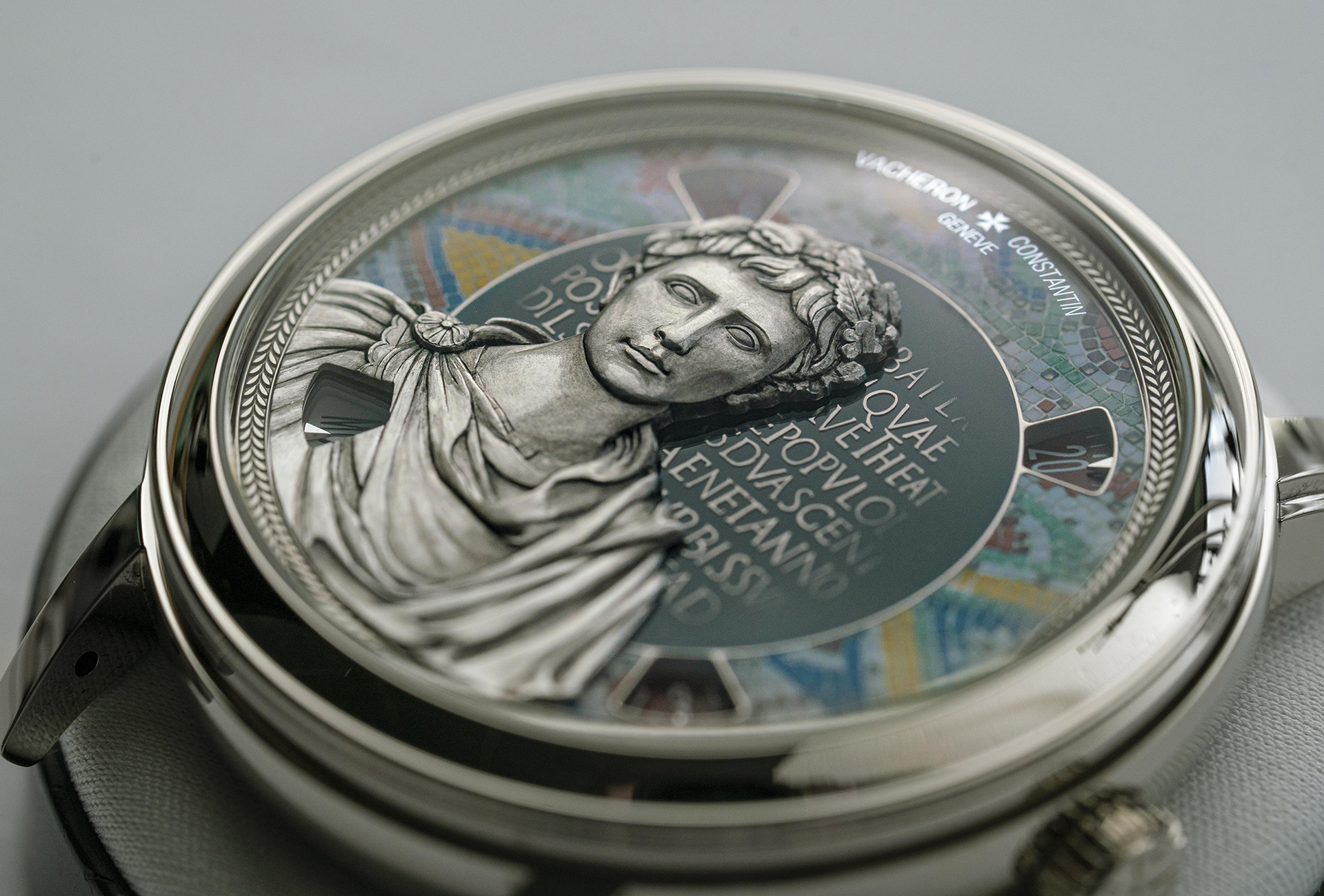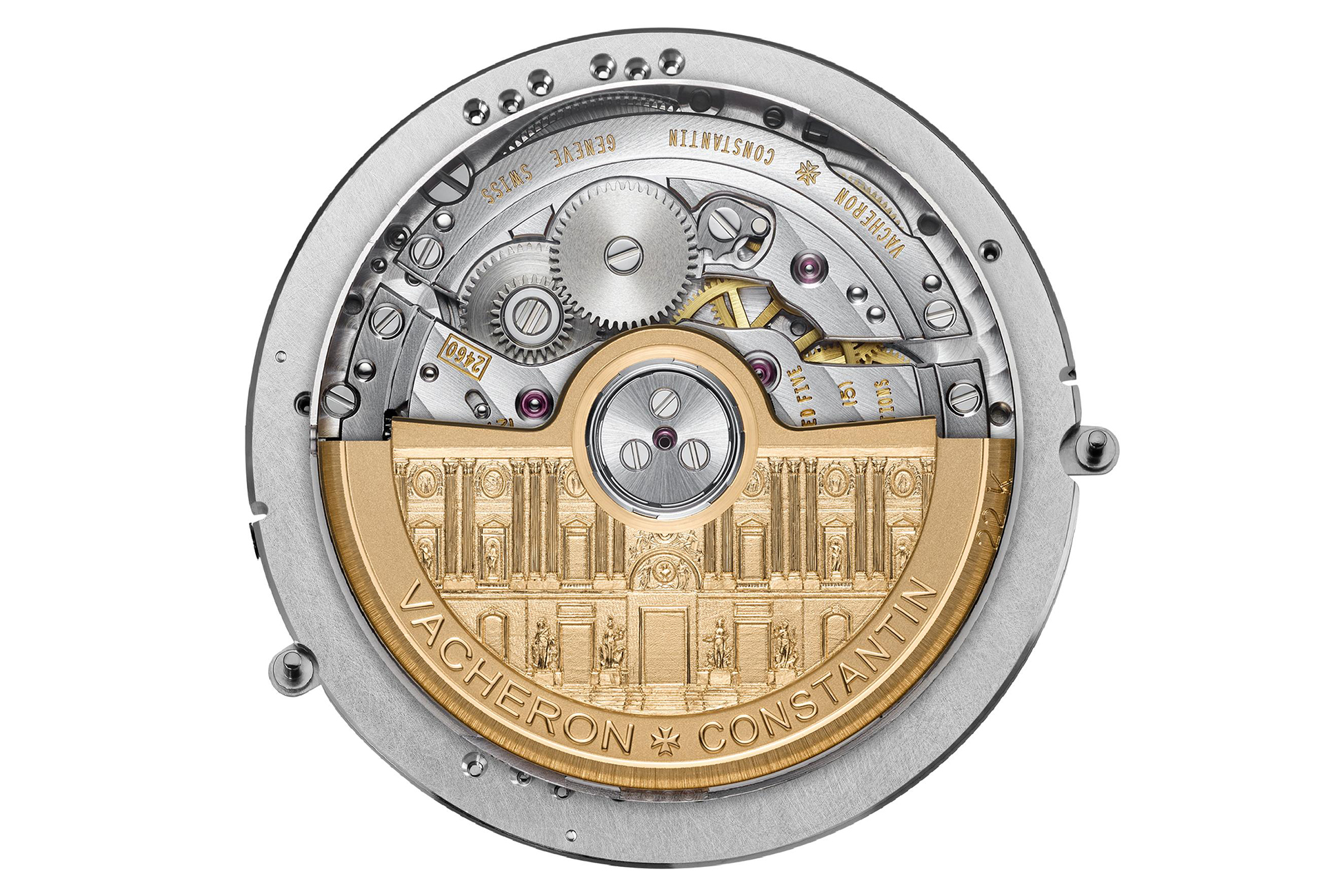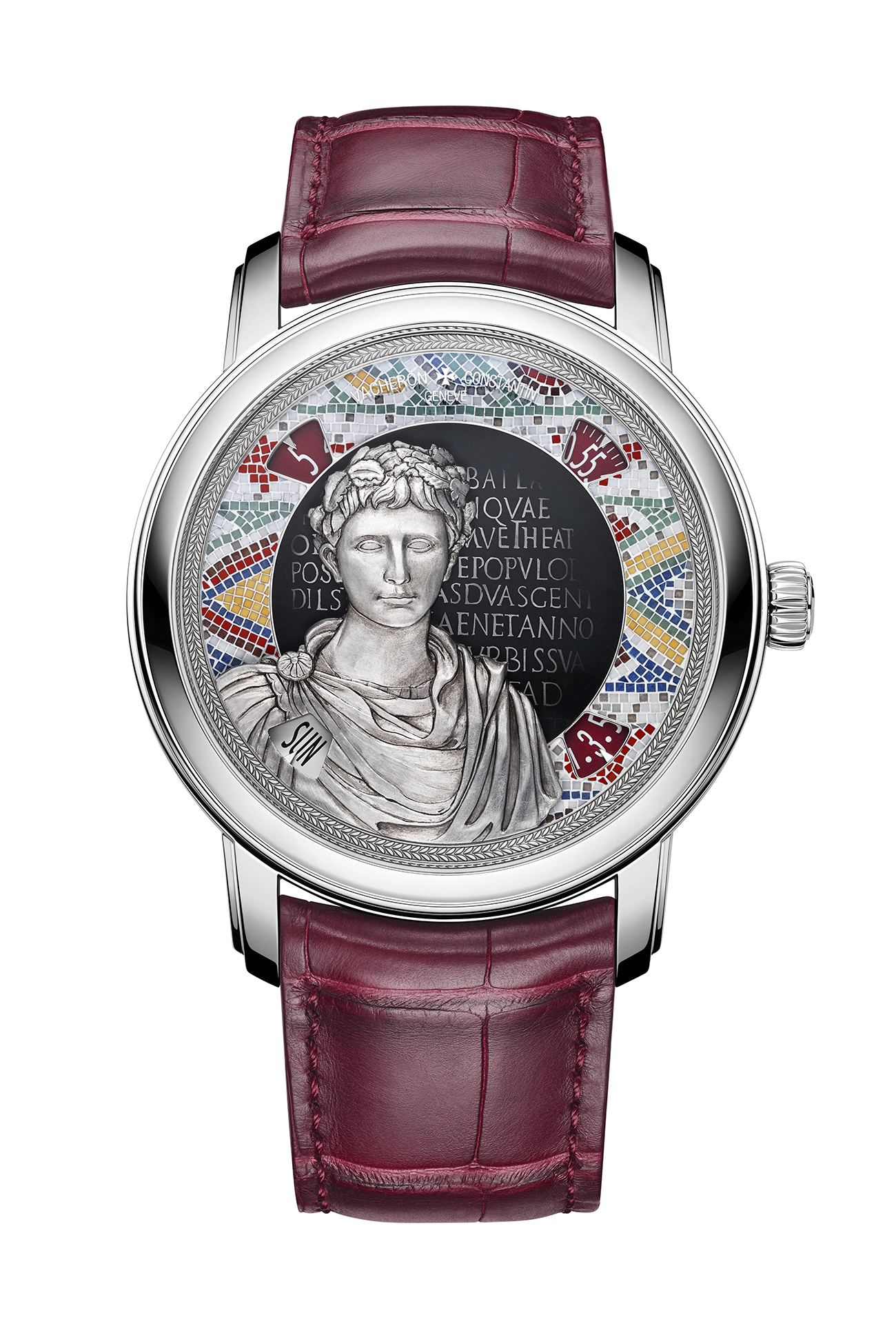Every day some 30,000 people come to the Louvre to contemplate the 36,000 works on display, making it the most visited museum in the world. Every day, that is, except Tuesday when the museum is closed to the public. On one particular Tuesday in May, however, a fortunate few had the rare opportunity to wander through the empty galleries and view some of the most famous artefacts in the care of the Louvre’s Department of Antiquities. Partners since 2019, the Musée du Louvre and Vacheron Constantin had invited the media for a “live” presentation of the latest timepieces to join the watchmaker’s Métiers d’Art collection. Each of these four Tribute to Great Civilisations watches is inspired by a masterwork from a period of antiquity that helped forged our present-day civilisations, while the ornamentation of the dials is the result of research into the decorative arts of the corresponding period. Each watch, crafted as a limited series of five, was presented next to the original work that inspired it in a stunning illustration of the infinitely great and the infinitely small.
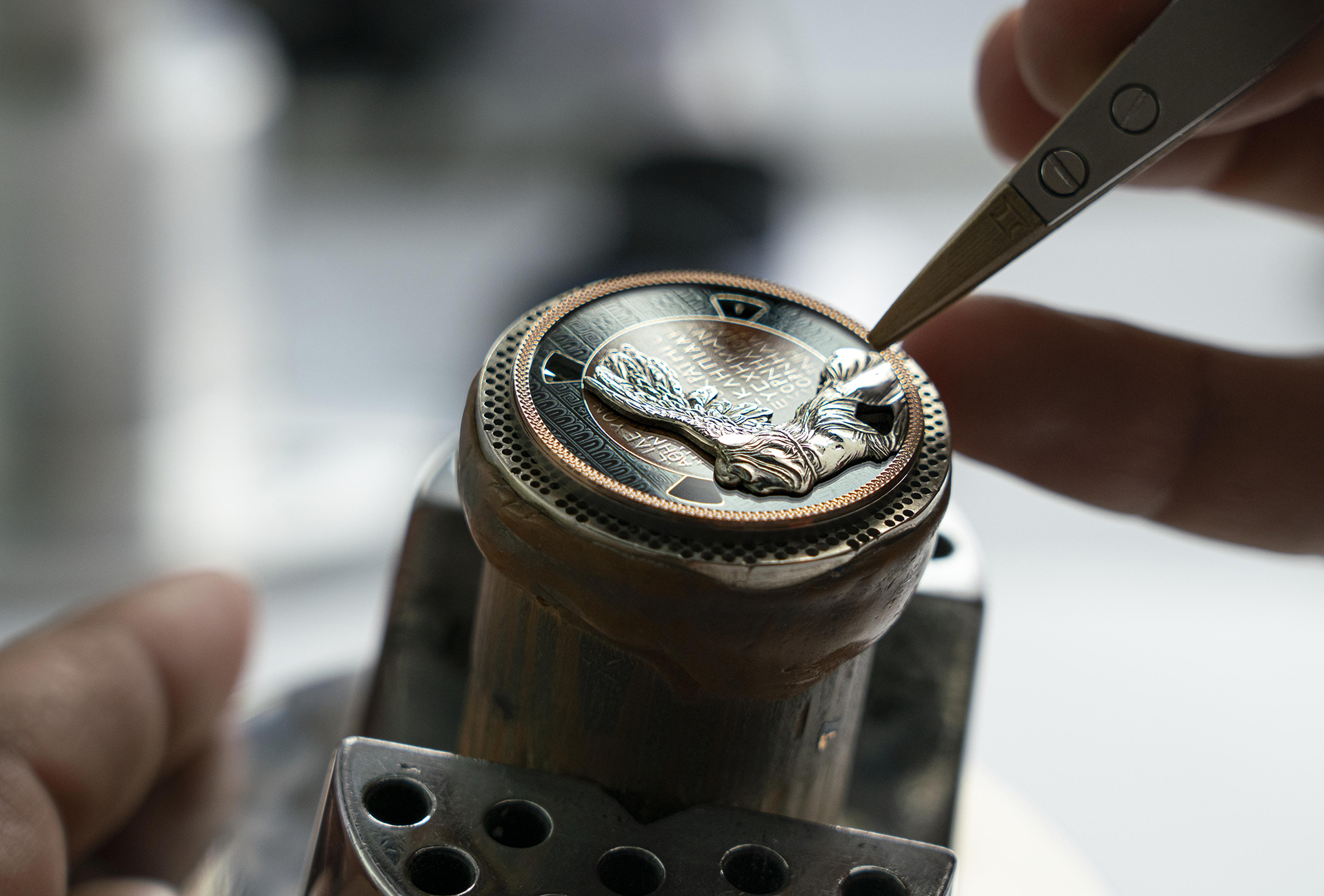
Four watches and four significant periods, represented by a major cultural symbol of our ancestors’ genius. They are the Grand Sphinx of Tanis, representing the Ancient Egyptian Empire (2035-1680 BC); the Lion of Darius, part of a frieze on the Palace of Darius the Great in Susa, the capital of the Persian Achaemenid Empire (558-330 BC); the Victory of Samothrace representing Hellenistic Greece of the Antigonid dynasty (227-168 BC) and a bust of Octavian Augustus, the first principate of the Roman Empire of the Julio-Claudians (27 BC-68 AD). Each work is rendered as a carved gold applique, placed on the dial. Nor is this the only demonstration of the métiers d’art. In its desire to enrich each composition, Vacheron Constantin’s Department of Creation worked closely with the Louvre’s specialists to devise a theme that would illustrate the decorative arts of the corresponding period, again inspired by works in the Louvre’s collections. They are Roman mosaics; a painted Egyptian coffin; painted or bas-relief sculpted Greek ceramics and vases, and a frieze of Babylonian-inspired bricks with coloured glazes.
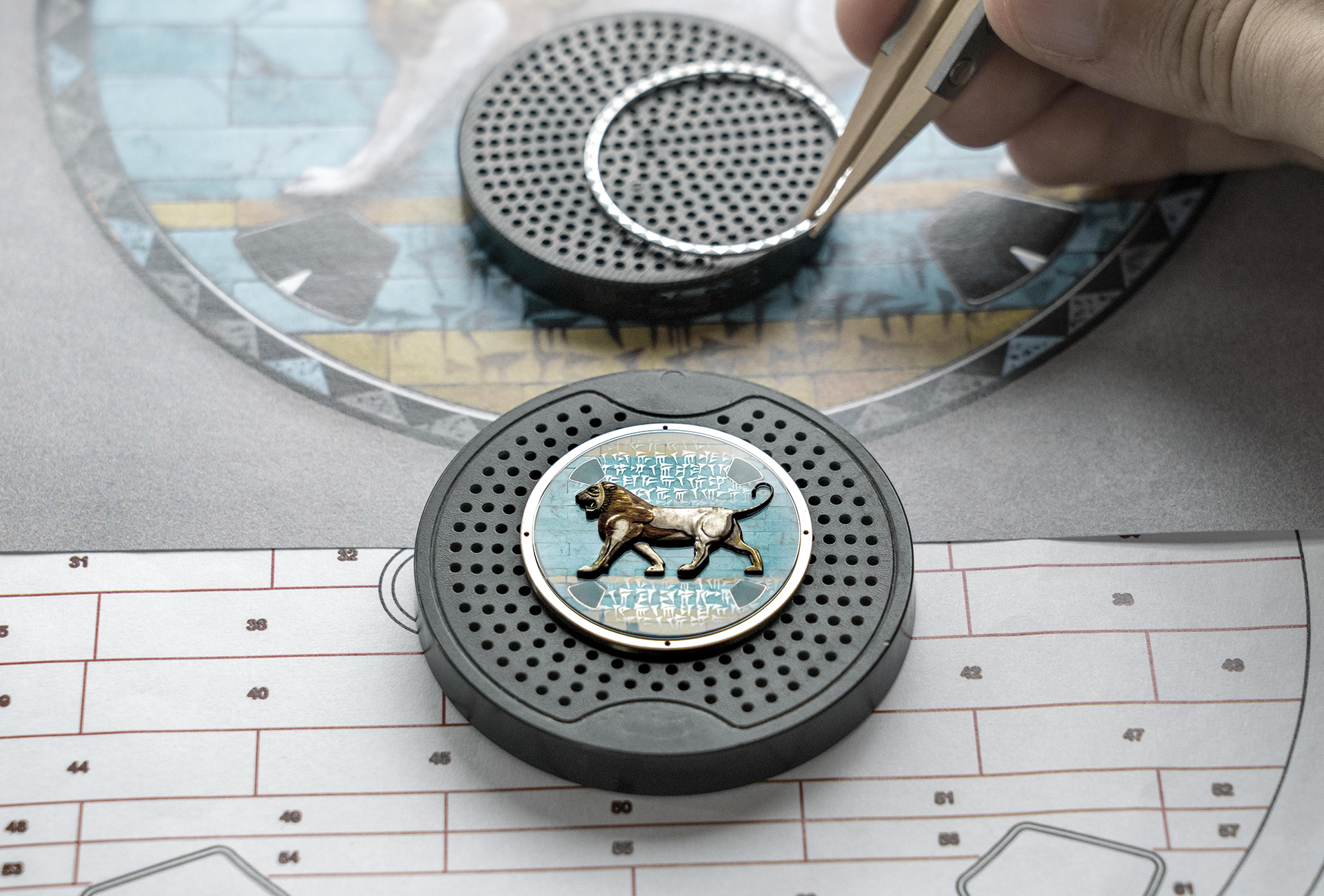
The different constituent parts of each decoration are “nested” together to form a homogenous whole. Thus the movement is topped by the dial which is surrounded by a frieze. On both these elements, the master artisans have demonstrated the range of their talent in engraving and micro-sculpture, grisaille and champlevé enamel, stone marquetry and stone micro-mosaic. A sapphire crystal bearing the sculpted gold applique depicting one of the four chosen works is then placed on the dial. This slightly smoked crystal displays text in cuneiform, hieroglyphic, ancient Greek or Latin script, as appropriate to the timepiece, in metallised engraving. These texts are respectively an extract from the founding charter of the Palace of Darius; a transcription of the cartouche of the pharaoh Menenptah engraved on the Sphinx of Tanis; a dedication to the Great Gods of Samothrace as discovered in the Temple of Samothrace and an invocation to the Emperor Augustus, engraved on a Roman stele discovered in Algeria. Once these multiple elements have been positioned on top of the movement, the case is sealed with the outer crystal.
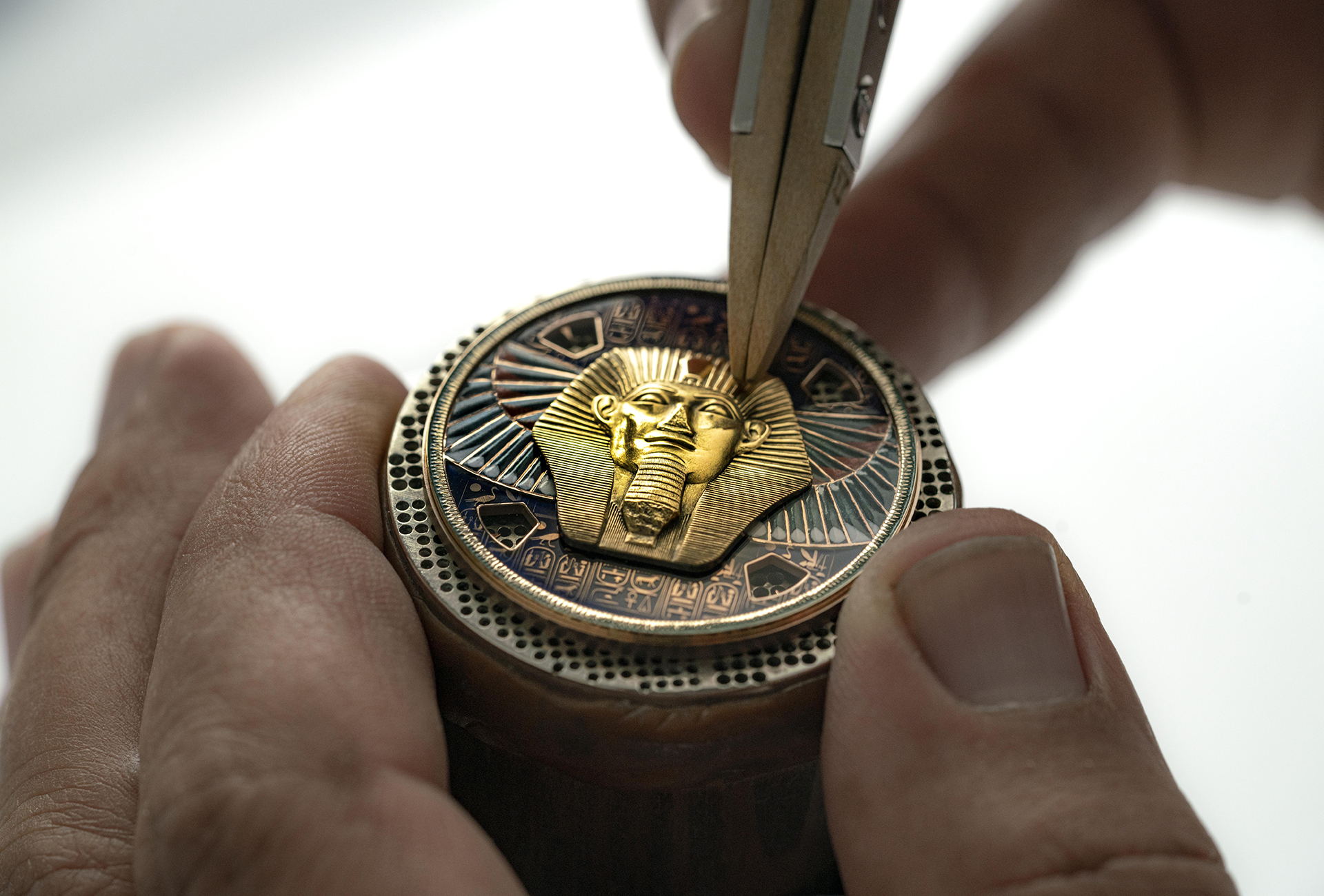
All four watches are fitted with Vacheron Constantin’s automatic 2460 G4/2 calibre, with four apertures around the edge of the dial for indications of the hours, minutes, day and date. There are no hands to “intrude on” the artistic dials. The oscillating weight of the movement, which beats at 4 Hz (28,800 vibrations per hour) and comprises 237 components, is stamped with a hand-sculpted matrix showing a depiction of the Louvre’s east façade and its magnificent colonnade, after an eighteenth-century lithograph.
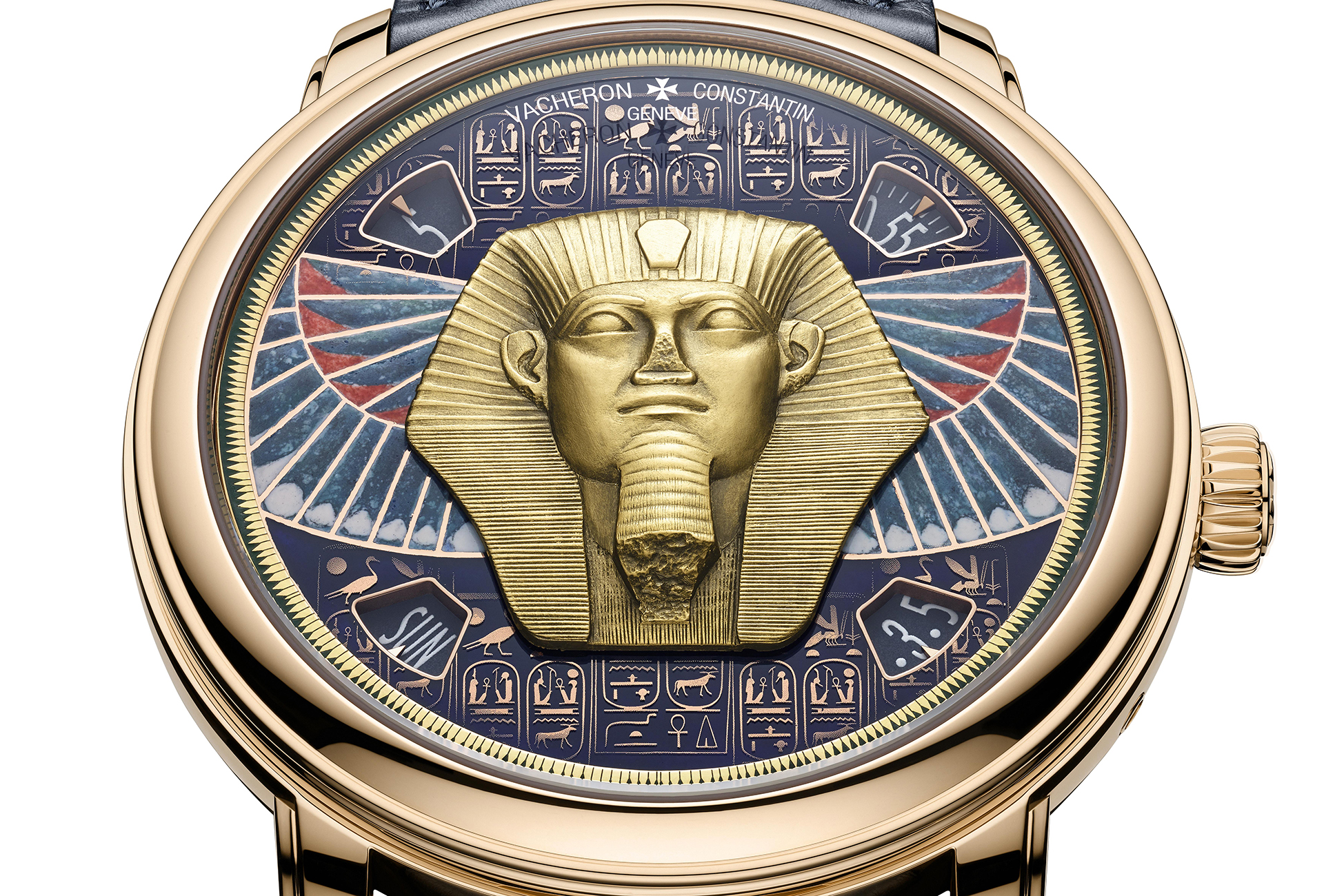
Grand Sphinx de Tanis
One of the difficulties when engraving the carved gold applique of the sphinx’s head, in addition to creating the relief of the face, was to render the large false beard within such small confines. The deep colour of the dial, a mixture of blue and black enamels, is the result of six firings in the kiln. The dial elements are inspired by images of the deceased in his shroud adorned with colourful protective motifs. His chest is covered by an imposing necklace of geometric and floral designs. It has been reproduced on the dial in champlevé enamel. Inclusions incorporated into the enamel give the outer frieze its aged appearance. Beneath the necklace is a winged hawk with a ram’s head. The plumage of the bird’s wings is carried over onto the dial, again in champlevé enamel.
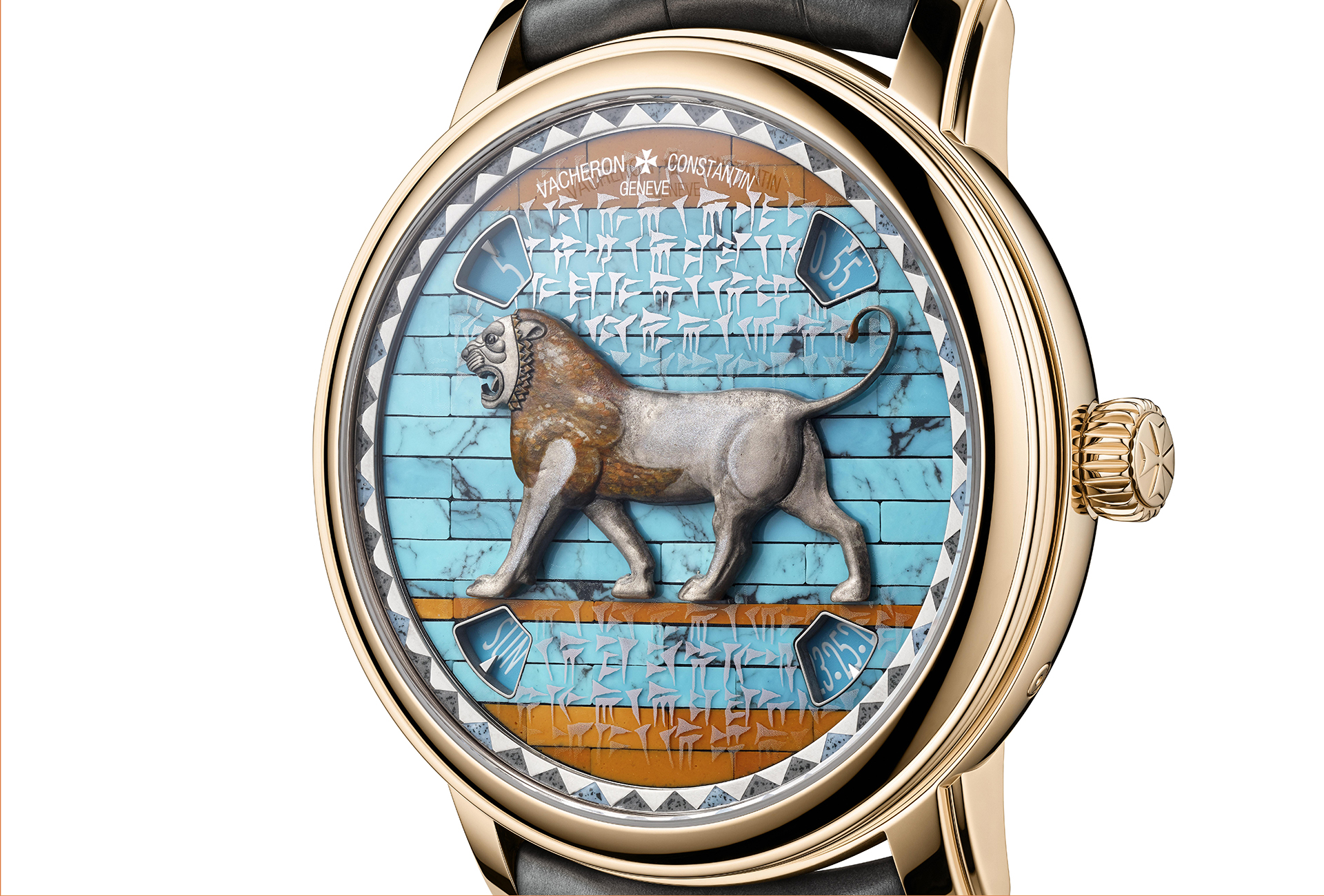
Lion de Darius
One of the most remarkable features of the lions on the frieze that adorned the Palace of Darius is the advanced stylisation of their muscles and fur, which this sculpted applique realistically reproduces. To illustrate the fact that the lion is part of a frieze on a wall, the background represents glazed bricks. Vacheron Constantin’s artisans achieved this decoration with a stone marquetry whose 69 components are all different in appearance and size. They specifically selected stone fragments that displayed veins, despite their greater fragility, knowing that this would produce a more realistic rendering. The frieze surrounding the dial borrows from another well-known work from the Palace of Darius: the Frieze of Archers. This juxtaposition of triangles is made of engraved metal and champlevé enamel with “ageing” inclusions.
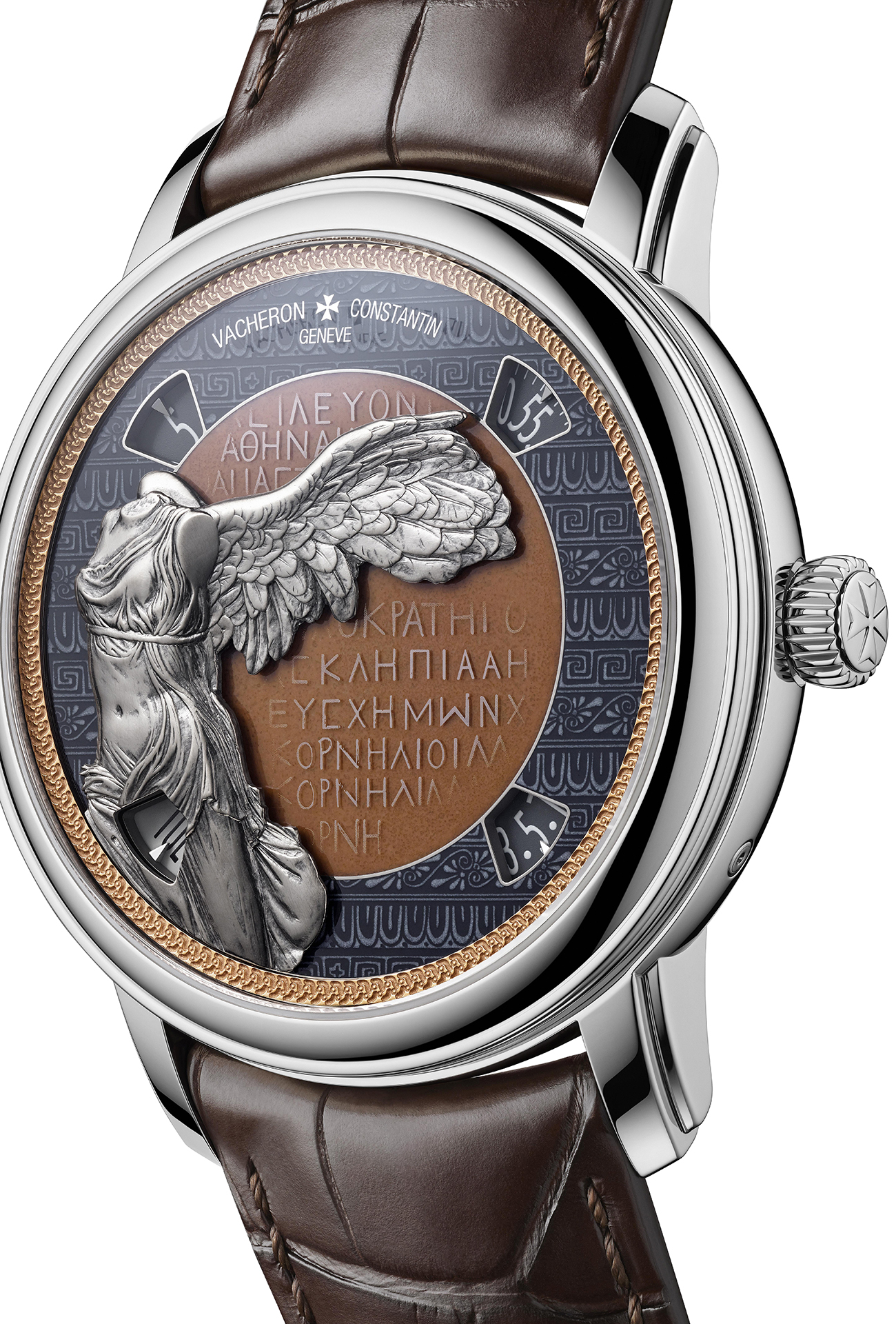
Victoire de Samothrace
The greatest challenge for the engraver tasked with reproducing the subtleties of this statue in white Parian marble was to imitate the drapery that falls in deep folds between the legs of the goddess Nike. The brown enamel of the dial’s centre is achieved by mixing rare enamels – so rare they are no longer produced – which are then fired six times in the kiln. A band of grisaille enamel around the centre references decorative friezes from two Greek vases whose foliage and geometric motifs are transposed here. At the very outer edge of the dial is a line-engraved gold frieze, inspired by the bas-relief sculpting on a marble vase from Pergamon, from the first century BC.
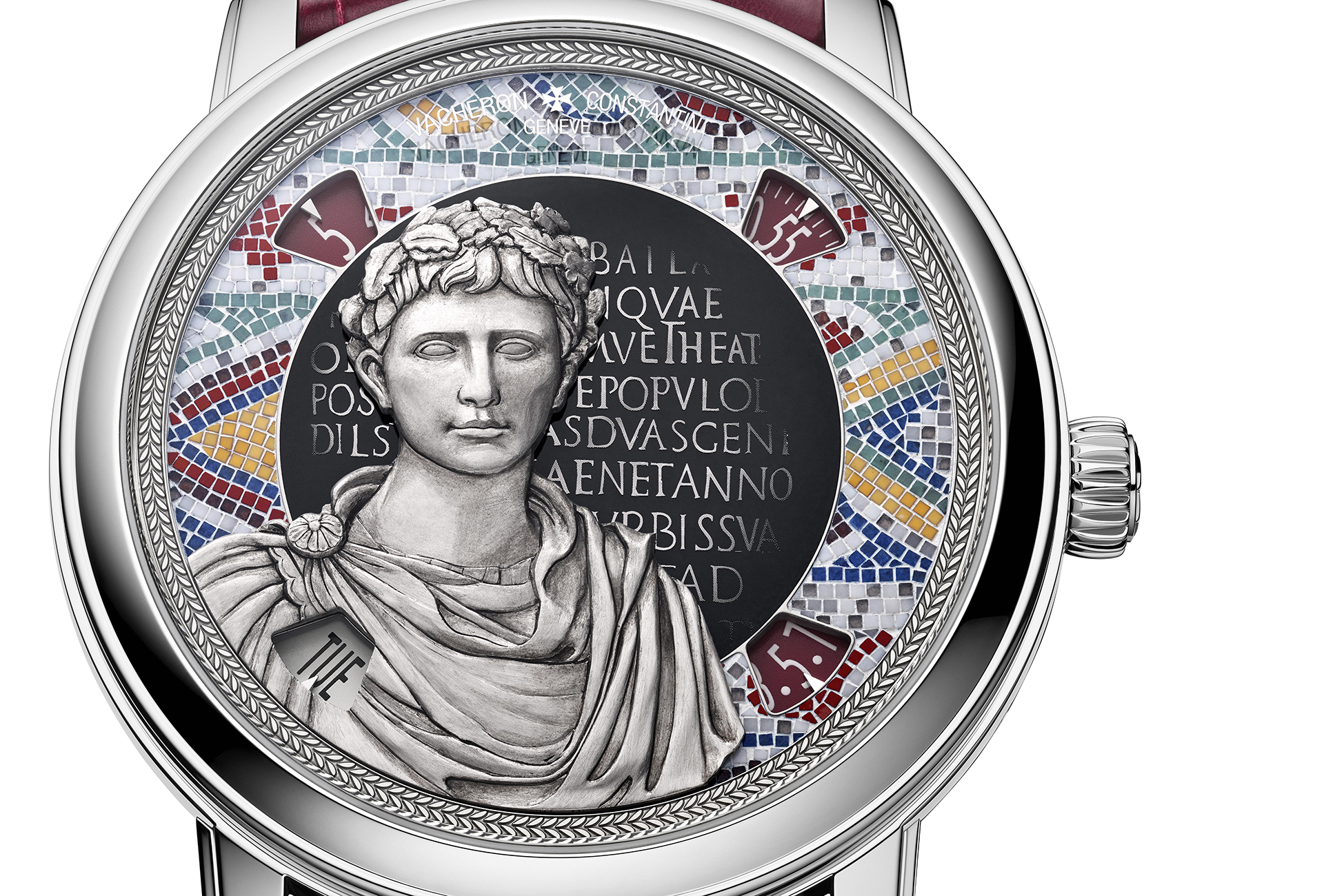
Buste d’Auguste
In this carved gold applique representing a bust of Augustus, the drape of the cape worn by the first Roman emperor, fastened over his breast plate by a fibula, echoes the curling locks held in check by his oak crown. The centre of the dial in blue-green enamel is surrounded by a stone micro-mosaic of patterns taken from a fourth-century Roman mosaic that was found in Lod, Israel. The 660 fragments are cut from seven types of stone. Around the very outer edge of the dial, a line-engraved frieze in white gold, patinated in the kiln, references a fourth-century mosaic of animals playing musical instruments that was found in Sousse, a port city in eastern Tunisia.








